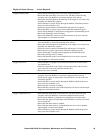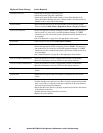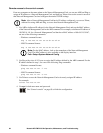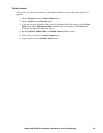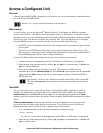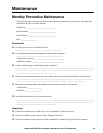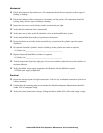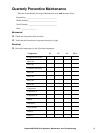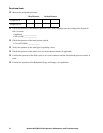
NetworkAIR FM DX 60 Hz Operation, Maintenance, and Troubleshooting
67
SSH for high-security access. If you use the high security of SSL for the Web interface, use
Secure SHell (SSH) for access to the control console. SSH encrypts user names, passwords, and
transmitted data.
The interface, user accounts, and user access rights are the same whether you access the control
console through SSH or Telnet, but to use SSH, you must first configure SSH and have a SSH client
program installed on your computer.
See the User’s Guide for more information on configuring and using SSH.
Note: The menu structure for administration and device management in the control
console differs from the menu structure for these areas in the Web interface. See the
User's Guide for an overview of the control console menus
SNMP
After you add the PowerNet
®
MIB to a standard SNMP MIB browser, you can use that browser for
SNMP access to the NetworkAIR FM DX. The default read community name is public; the default
read/write community name is private.
Note: If you enable SSL and SSH for their high-security authentication and encryption,
disable SNMP. Allowing SNMP access to the NetworkAIR FM DX compromises the
high security you implement by choosing SSL and SSH. To disable SNMP, you must be
an Administrator; use the SNMP option of the Network menu.
FTP/SCP
You can use FTP (enabled by default) or Secure CoPy (SCP) to transfer new firmware to the
Network Management Card, or to access a copy of the event logs of the NetworkAIR FM.
SCP provides the higher security of encrypted data transmission and is enabled automatically when
you enable SSH.
Note:If you enable SSL and SSH for their high-security authentication and encryption,
disable FTP. Allowing file transfer to the NetworkAIR FM through FTP compromises the
high security you implement by choosing SSL and SSH. To disable FTP, you must be an
Administrator; use the FTP Server option of the Network menu.
To access the Network Management Card through FTP or SCP, the default user name and password
are apc and apc for an Administrator, or device and apc for a Device Manager. In the command line,
use the IP address of the unit.
See: the User’s Guide to use FTP or SCP to transfer firmware files to or to retrieve the
log file from the Network Management Card.



